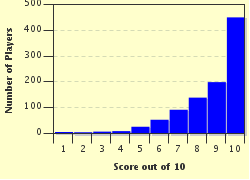Quiz Answer Key and Fun Facts
1. Deir ez-Zor in eastern Syria is the site of a bridge across one of the most historically important rivers in western Asia. Originating in eastern Turkey, this river flows through Syria and Iraq, eventually joining with the Tigris River before emptying into the Persian Gulf. What is the name of this river?
2. The city of Aleppo has been known as a commercial centre for over 4000 years, probably because it is conveniently located between the Mediterranean and Mesopotamia. It was a major stop on the trade routes for caravans carrying goods between China and Europe, of major importance before the opening of the Suez Canal at the end of the 19th century. By what name is this system of trade routes most commonly known?
3. Idlib is very near the site where the Ebla tablets were discovered. These tablets used Sumerian script to write down the Eblaite language in around 2250 BCE. What term is more commonly used to describe Sumerian writing?
4. The city of Hama is famed for its 17 norias ('wheels of pots'). For what purpose were these norias originally constructed around 1000 BCE?
5. The mixture of religious groups in Syria has led to some discord over the years. One of the country's main Mediterranean ports was the capital of a region which attempted to set itself up as an independent Alawite state during the time of the French protectorate in Syria. Which city, originally named after Laoidice, the mother of Seleucus I Nicator, the Seleucid ruler who founded the modern city, is the principal port of Syria?
6. Tartus, then known as Tortosa, was the scene of fierce fighting during the Crusades, as its position on the coast gave it strategic significance. Starting in 1152, it was used as a military centre to protect the city and surrounding area from Muslim attack. Which group of crusading knights was located in Tortosa until 1291, despite Saladin's capture of the city in 1188?
7. Near Homs you can see Lake Homs, an important reservoir created by the Lake Homs Dam. Which civilization, known for its feats of engineering across their extensive empire, was responsible for the original construction of this dam?
8. As-Suwayda (also Sweida) is a mainly Druze city with a large Greek Orthodox minority. During the period of Hellenistic (Greek) influence, the city was renamed Dionysias, a reference to its location in an area famous as an ancient producer of what product?
9. The capital city of the muhafaza (province) of Rif Damashq, and one of the two largest cities in Syria, is also the oldest continuously-inhabited city in the world (at least, according to some sources). Can you identify this city, nicknamed 'The City of Jasmine'?
10. Quneitra is the capital of a province that was annexed by Israel during the Six-Day War of 1967, and whose territory has changed hands several times since. What is the more familiar name of this highly-contentious mountain region?
Source: Author
looney_tunes
This quiz was reviewed by FunTrivia editor
Pagiedamon before going online.
Any errors found in FunTrivia content are routinely corrected through our feedback system.

